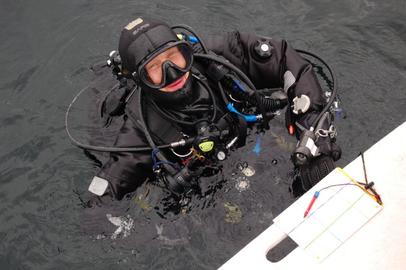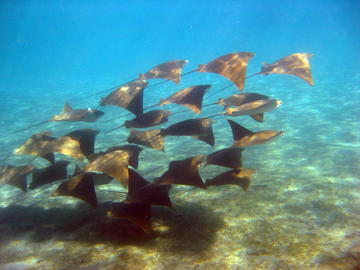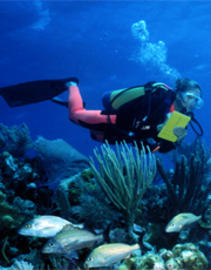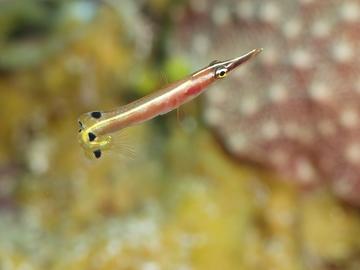REEF announces the release of "The Lionfish Cookbook", available for $16.95 online at http://www.reef.org/catalog/cookbook. The book is a unique blend of 45 tantalizing recipes, background on the lionfish invasion and its impacts, as well as information on how to safely catch handle and prepare the fish. Invasive lionfish are a new threat to western Atlantic, Caribbean and Gulf of Mexico waters.
REEF members are at the heart of our grassroots marine conservation programs. Over 43,000 divers, snorkelers, students, and armchair naturalists stand behind our mission.
This month we highlight Georgia Arrow (REEF member since 2002). Georgia lives in Portland, Oregon, has conducted 686 REEF surveys in four different regions, and is a Level 5 Expert surveyor in the Pacific. She has the most surveys of anyone in the west coast Pacific region. Here's what Georgia had to say about REEF:
When and how did you first volunteer with REEF?
REEF is proud to partner with over 130 dive shops, dive clubs, individuals, and other organizations as REEF Field Stations.
Some of the best dive sites for fishwatching are in the least obvious places. The Blue Heron Bridge in Palm Beach, Florida, is one such biological hotspot. This is a top dive destination for sighting unusual species that can be added to your lifelist. Mike Phelan, REEF Expert surveyor, and two other REEF members, often dive this site. The day before Thanksgiving, they were treated to quite a sight – a large school of Cownose Rays!
World-wide declines in shark and ray populations have prompted the need for a better understanding of their patterns of distribution and abundance. While much of the focus has been on the larger species of sharks, little attention had been paid to the most frequently sighted elasmobranch species in the greater-Caribbean, the yellow stingray (Urobatis jamaicensis). Despite being relatively common and listed as Least Concern on the IUCN Red List, little was known about the status of this species. Unfortunately, it has been quietly declining. Dr.
Every month, scientists, government agencies, and other groups request raw data from REEF’s Fish Survey Project database. Here is a sampling of who has asked for REEF data recently and what they are using it for:
- Researchers at the World Resources Institute are using western Atlantic REEF data in an analysis of threats to the world’s coral reefs called Reefs at Risk Revisited.
- A scientist from Washington Department of Fish and Wildlife is evaluating population trends of rock scallop in preparation for harvest rule updates.
REEF members are at the heart of our grassroots marine conservation programs. Over 43,000 divers, snorkelers, students, and armchair naturalists stand behind our mission.
REEF is proud to partner with over 130 dive shops, dive clubs, individuals, and other organizations as REEF Field Stations.
Current Most Active Surveyors
Conducted the most surveys in the last three months:
TWA – Peter Leahy (169), Michael Phelan (67), Dave Grenda (48)
NE – Jason Feick (9), John Feehan (8), Michael MacDonald (7)
PAC – Rhoda Green (36), Jan Kocian (34), Betty Bastai (31)
TEP – Carol Cline (16), Daniel Richards (12), Gerald Winkel (3)
HAW – Don Judy (41), Rick Long (34), Flo Bahr (23)
To date, 140,234 surveys have been conducted by REEF volunteers.









